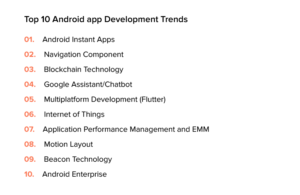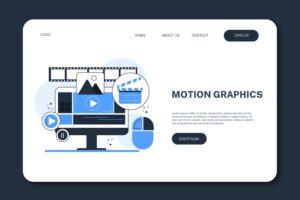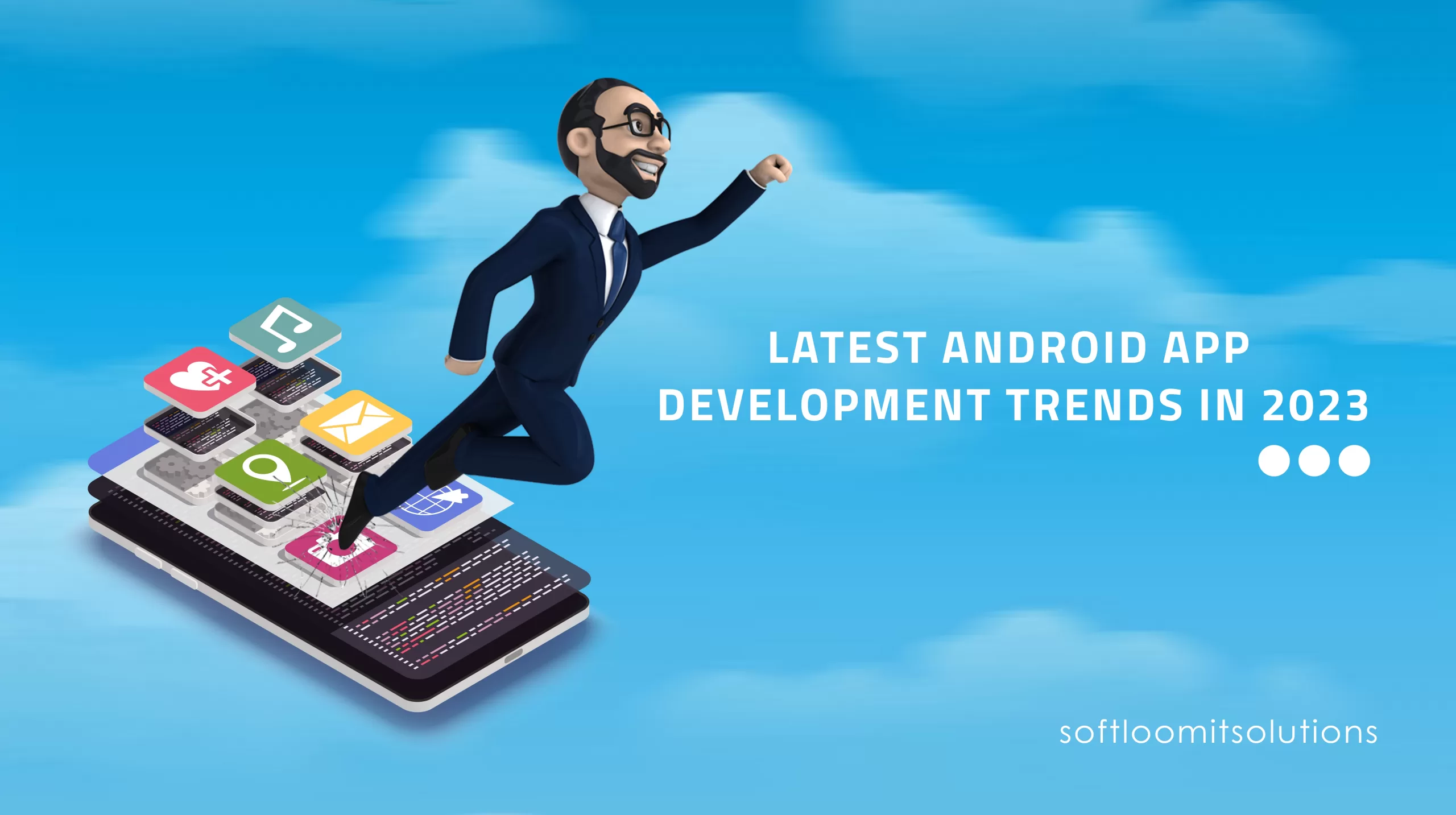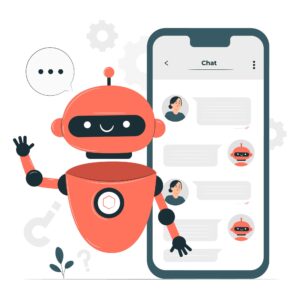Let’s take a look at Android app development Trends for 2023!
Here are some Latest Android app development Trends to design a new world of Android apps.

Mobile app development is the process of creating software applications that run on mobile devices such as smartphones and tablets. The process typically involves designing, coding, testing, and maintaining the app. It requires expertise in mobile platform technologies, programming languages, and software development methodologies. he most commonly used programming languages are Java, Swift, and Kotlin.
Android App Development
Android app development is the process of creating software applications for the Android operating system, which is used on a variety of mobile devices, including smartphones and tablets. The process involves designing, coding, testing, and maintaining the app using the Android SDK and Java programming language. Other tools and technologies used in Android app development include Android Studio, the Android emulator, and the Android NDK. To publish an app on the Google Play store, developers must follow the store’s guidelines and meet certain requirements.
Latest Trends in Android App Development
Here are some of the current trends in Android app development:

- Artificial Intelligence and Machine Learning: AI and ML are being increasingly used to create personalized and intuitive experiences in Android apps.
- Cross-platform development: Cross-platform development tools and technologies are becoming more popular, allowing developers to create apps that work on multiple platforms.
- Internet of Things (IoT): Android app developers are incorporating IoT technology to create apps that control and monitor connected devices.
- Kotlin: Kotlin is becoming a popular programming language for Android app development due to its concise syntax, improved type inference, and better performance compared to Java.
- Instant Apps: Google’s Instant Apps technology allows users to access apps instantly, without having to install them on their device. This is a growing trend in Android app development.
These are some of the key trends shaping the Android app development in the current time.
Android Instant Apps
Android Instant Apps are a feature that allows users to access parts of Android apps instantly, without having to install them on their device. This allows for a seamless and fast app experience, as users can start using an app immediately. Without the need to go through the installation process. Instant Apps work by breaking down an app into smaller components, which are loaded on-demand when needed. Moreover, these are built using the Android SDK. They are becoming a popular trend in Android app development, as they offer a better user experience and increased accessibility to apps.
Navigation Component
The Navigation Component is a part of the Android Jetpack library that simplifies the implementation of navigation within an Android app. It provides a simple and flexible way for developers to manage the navigation between different destinations in an app, such as fragments or activities.
Benefits of navigation components :
- Simplified navigation logic: The Navigation Component handles the navigation logic for you, making it easier to implement navigation in your app.
- Improved navigation UI: The Navigation Component provides a number of built-in UI components for navigation, such as navigation bars and drawers, that can be easily integrated into your app.
- Better navigation management: The Navigation Component helps you manage the navigation state of your app, making it easier to handle complex navigation scenarios.
- Increased accessibility: The Navigation Component includes built-in support for accessibility, making it easier to create accessible apps.
Blockchain Technology
Blockchain technology is a decentralized, distributed ledger system that records transactions across a network of computers. Some key features of blockchain technology include:
- Decentralization: There is no central authority or middleman in a blockchain network, making it a decentralized system.
- Immutable record-keeping: Once a transaction is recorded on the blockchain, it cannot be altered, ensuring a permanent and secure record of all transactions.
- Transparency: All participants in a blockchain network have access to the same information, promoting transparency and reducing the possibility of fraud.
- Enhanced security: Blockchain technology uses cryptographic algorithms to secure transactions, making it difficult for malicious actors to compromise the network.
Blockchain technology has the potential to revolutionize various industries, such as finance, supply chain management, and healthcare, among others.
Google Assistant / Chatbot
Google is developed the Google virtual assistant that can perform a variety of tasks and answer questions through natural language processing. It is available on a variety of devices, including smartphones, smart speakers, and smart displays. Google Assistant uses machine learning algorithms to understand and respond to user requests, and then, it can integrate with other Google services and third-party apps to provide a personalized experience.
Chatbots are computer programs designed to simulate conversation with human users. They can be integrated into websites, mobile apps, and messaging platforms to provide customer support, answer questions, and perform other tasks. Google Assistant is a type of chatbot that is designed to provide a conversational experience. It uses natural language processing and machine learning algorithms to understand and respond to user requests, and it can be integrated into other Google services and third-party apps to provide a more comprehensive experience.
Google Assistant and chatbots are becoming increasingly popular. Also, they offer a convenient and accessible way for users to interact with technology and access information. They are also becoming important tools for businesses. In addition, they can provide efficient and cost-effective customer support and help companies reach with their customers in new ways.
Development Through Flutter
Flutter is an open-source, cross-platform development framework created for building high-performance, beautiful, and responsive apps for mobile, web, and desktop.
Some key features of Flutter include:
- Fast development: Flutter’s “hot reload” feature allows developers to see the results of their code changes instantly, without having to restart the app.
- Single codebase: Developers to write a single codebase that can run on multiple platforms, including iOS and Android. Resulting to reducing development time and costs.
- Customizable widgets: It Provides a rich set of customizable widgets. And can be used to build beautiful user interfaces, eliminating the need to write platform-specific UI code.
- High performance: Flutter uses a fast, GPU-accelerated rendering engine, which results in smooth and responsive apps, even on older devices.
- Growing community: Flutter has a large and active community of developers who are continuously creating new plugins and packages, making it easier to add new features and capabilities to your app.
Flutter is becoming a popular choice for multiplatform app development, as it offers a fast, efficient, and customizable development experience.
Internet of Things
The Internet of Things (IoT) refers to the growing network of vehicles, home appliances, and other objects. That are embedded with electronics, software, and sensors, enabling them to connect to the internet and collect and exchange data.
Some key features of the IoT include:
- Connected devices: IoT devices can collect and exchange data with each other. Furthermore, help them to work together to perform tasks and make decisions.
- Automation: IoT performs certain actions automatically, reducing the need for manual intervention.
- Data collection: IoT devices can collect and transmit large amounts of data. Which can be used to inform decision-making and improve operations.
- Remote access: Accessed and controlled remotely, enabling users to monitor and control their devices from anywhere in the world.
- Improved efficiency: Used to optimize processes and reduce waste, improving efficiency and reducing costs.
The IoT is rapidly growing and is expected to have a significant impact on a variety of industries like manufacturing, healthcare, and transportation.
APM & EMM APM (Application Performance Management) and EMM (Enterprise Mobility Management)
One among the latest trends in android app development is APM and EMM. APM refers to the process of monitoring and managing the performance of an application, including its availability, responsiveness, and reliability. The tools help IT teams to monitor the performance of applications in real-time and to identify and resolve performance issues quickly.
EMM, on the other hand, refers to the management of mobile devices, applications, and data in an enterprise environment. Tools help IT teams to manage and secure mobile devices, to enforce security policies, and to manage and distribute mobile applications.
APM and EMM are both important for ensuring the smooth operation of IT systems and for ensuring the security of data and devices. While APM focuses on the performance of applications, EMM focuses on the management of mobile devices and the security of data and applications stored on those devices.
Motion Layout

Its a constraint-based layout system for creating animations and transitions in Android apps. Motion layout is the top most latest trends in android app development.
Some key features include:
- Constraint-based: It allow developers to specify the relationships between different views . Also determine how they should change during an animation.
- Dynamic transitions: Developers to create dynamic transitions between different states of a view.
- Keyframe animations: It supports keyframe animations, which allow developers to create complex animations. That is specifying different values for different time.
- Interpolation: Developers to smoothly transition between different values during an animation. Example, smoother and more natural animations.
- Customizable: Refers to customize their animations using a variety of attributes and settings like, duration, interpolation type, etc.
Motion Layout is a powerful tool for creating animations and transitions in Android apps, and it has become increasingly popular among Android developers. It is part of the Android Jetpack libraries, which are a set of pre-packaged components and tools that make it easier to develop high-quality Android apps.
Beacon Technology
Beacon technology is a type of location-based technology that allows devices to communicate with one another over short distances using Bluetooth Low Energy (BLE) signals. Beacons are small, battery-powered devices that emit BLE signals detected by smartphones or other beacons.
Some key features of beacon technology include:
- Location-based: Determine the location of a device helps for indoor navigation and location-based services.
- Contextual information: Beacons can be to transmit contextual information, such as advertisements or promotions. It helps retailers and other businesses to deliver targeted content to their customers.
- Low power consumption: BLE is a low-power technology, allowing them to operate for long periods of time on a single battery.
- Versatile: Used in a wide range of applications, from retail to transportation, and from healthcare to tourism.
- Cost-effective: Beacons are relatively inexpensive, making them accessible to businesses of all sizes.
The services offered in Android App Development include:
- Requirements gathering: This involves working with clients to understand their needs and requirements for their Android app.
- Design: This involves creating the visual design, user interface, and user experience for the Android app.
- Development: This involves writing the code for the Android app, testing it, and fixing any bugs.
- Deployment: This involves publishing the Android app on the Google Play Store and making it available for users to download.
- Maintenance and Support: This involves providing ongoing support and maintenance for the Android app, including fixing bugs and adding new features.
Conclusion:
Android App Development Services are provided by companies that specialize in developing applications for the Android platform. SoftLoom IT Solutions is leading Android App development Company in Kochi, offers Android App with all latest innovations.
Whether you’re a small business looking to build a simple app or a large enterprise seeking a complex solution. And then, Android App Development Services can help you create a high-quality, user-friendly, and effective Android app.







